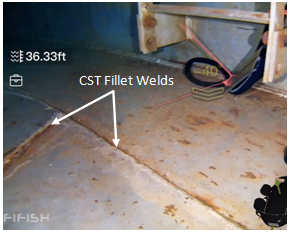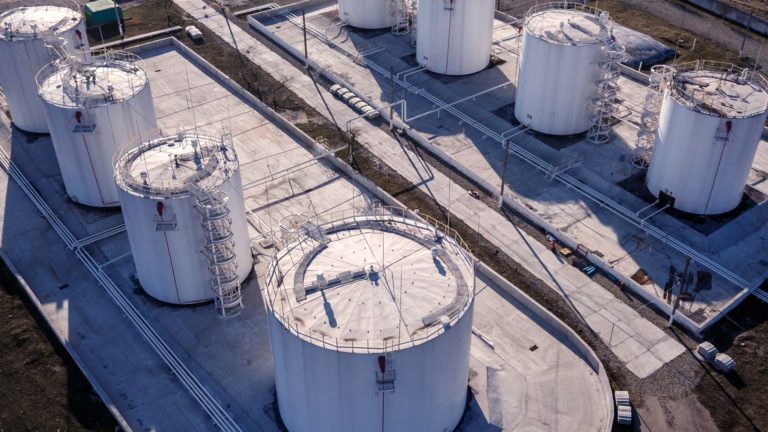Just How to Make Certain Conformity with Tank Welding Inspection Requirements
Just How to Make Certain Conformity with Tank Welding Inspection Requirements
Blog Article
A Comprehensive Review of Storage Tank Welding Inspection Specifications and Methodologies for Improved Weld Quality and Efficiency
The importance of welding evaluation requirements in the manufacturing of storage tanks can not be overstated, as they serve as the backbone for guaranteeing weld stability and operational dependability. Numerous evaluation methods, including visual evaluations and advanced non-destructive testing methods, are crucial in determining prospective flaws that might jeopardize performance.
Significance of Welding Examination Requirements

Welding assessment criteria include an array of requirements, including material specs, welding procedures, and credentials of personnel associated with the welding process. By imposing these standards, companies can methodically determine and rectify possible issues, thereby reducing the likelihood of costly repair work or disastrous failings. In addition, strenuous evaluation techniques cultivate a society of liability and accuracy, motivating welders to preserve high degrees of craftsmanship.

Typical Welding Assessment Strategies


Ultrasonic Examining (UT) is an additional prevalent method, using high-frequency acoustic waves to identify inner defects that may not show up on the surface. This approach is specifically effective for identifying voids or incorporations within the weld metal. Magnetic Fragment Checking (MT) is likewise widely made use of, particularly for ferromagnetic materials, as it exposes surface area and near-surface flaws with the application of electromagnetic fields and ferrous bits.
Furthermore, Fluid Penetrant Screening (PT) finds surface-breaking issues by using a penetrant to the weld and afterwards making use of a designer to extract the penetrant. Each of these methods adds to a comprehensive examination technique, guaranteeing that welds satisfy the stringent top quality criteria required in tank building and construction.
Regulative Requirements and Compliance
Governing requirements and conformity are important parts in guaranteeing the safety and dependability of welded frameworks in storage tank construction - Tank Welding Inspection. These requirements offer to establish minimum requirements for product homes, welding treatments, and evaluation practices, consequently reducing the risk of architectural failings and improving general efficiency
Secret companies, such as the American Culture of Mechanical Designers (ASME) and the American Welding Culture (AWS), offer guidelines that are extensively adopted in the sector. Compliance with these criteria not just ensures adherence to best practices yet additionally meets legal and legal commitments, guarding the passions of stakeholders.
Regulatory bodies commonly mandate adherence to details codes, such as ASME Code Section IX for welding qualifications and API 650 for welded storage tanks. These codes detail requirements for welding methods, qualifications of workers, and screening techniques to confirm weld stability.
Regular audits and assessments are essential to maintaining compliance, as they help identify discrepancies from established requirements. Non-compliance can lead to considerable charges, project hold-ups, and security dangers. Hence, a durable understanding of regulative requirements and a dedication to compliance are paramount in achieving premium and resilient bonded storage tank frameworks.
Non-Destructive Evaluating Techniques
Exactly how can the integrity of welded frameworks be guaranteed without causing damage? Non-destructive screening (NDT) approaches use a durable service, enabling assessors to assess weld quality without endangering the product - Tank Welding Inspection. Among one of the most typical NDT techniques are ultrasonic screening (UT), radiographic testing (RT), magnetic particle screening (MT), and color penetrant testing (PT)
Ultrasonic testing uses high-frequency sound waves to spot internal imperfections and characterize product homes. It gives precise measurements and is especially reliable for thick materials. Radiographic screening includes passing X-rays or gamma rays through the weld, developing pictures that reveal structural defects such as fractures or voids. This method is vital for analyzing the integrity of Visit Website complex welds.
Magnetic particle screening is fit for ferromagnetic materials, where electromagnetic fields disclose surface and near-surface stoppages. Dye penetrant screening utilizes a fluid color to highlight surface-breaking defects, making it an effective approach for non-porous products.
Each of these NDT approaches has distinctive advantages, permitting extensive analyses customized to particular products and welding processes. By carrying out these strategies, industries can make sure the reliability and security of welded structures, ultimately boosting overall performance.
Enhancing Weld Top Quality Via Inspection
Efficient examination plays an essential function in boosting weld top quality, functioning as an essential checkpoint in the construction process. By recognizing prospective defects early, examinations minimize the danger of jeopardized architectural stability and guarantee conformity with market criteria. Using a combination of aesthetic evaluations, non-destructive screening (NDT) techniques, and mechanical assessments, assessors can find problems such as porosity, fractures, and incomplete combination.
Executing a robust evaluation procedure not only view it now enhances the general top quality of welds yet additionally cultivates a society of liability amongst welders and producers. Routine training and qualification of evaluation employees guarantee that they are outfitted with the required skills to recognize and resolve prospective troubles effectively. This positive strategy lessens rework and connected prices, inevitably adding to project effectiveness.
In addition, extensive documents of assessment findings provides beneficial understandings right into repeating issues, promoting continuous enhancement in welding practices. By leveraging innovative modern technologies, such as automated ultrasonic screening or digital radiography, weld top quality can be enhanced through much more precise evaluations. To conclude, a rigorous examination procedure is essential in accomplishing top notch welds, making sure security, reliability, and long life in tank construction.
Verdict
To conclude, the application of rigorous storage tank welding inspection requirements and methods is necessary for making certain weld honesty my company and performance. By using a mix of aesthetic assessments, non-destructive testing techniques, and adherence to governing standards, organizations can properly recognize and mitigate prospective issues. Fostering a culture of accountability among welders additionally enhances the high quality of welding procedures. Ultimately, these practices add to minimized structural failures, reduced fixing expenses, and enhanced functional efficiency within the industry.
Report this page